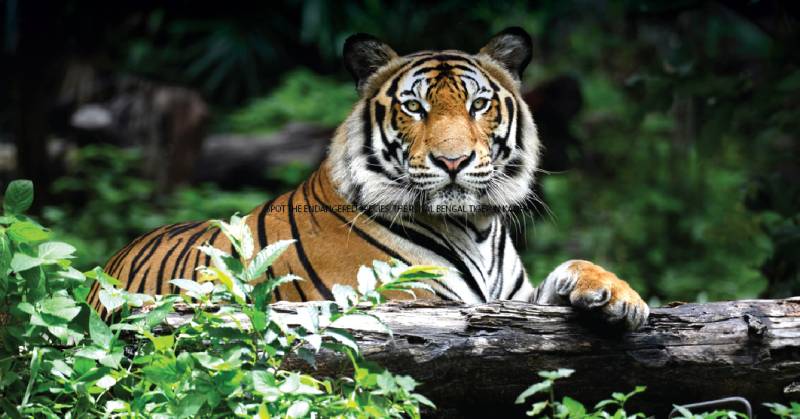
India is now home to 2,967 tigers [around 70 per cent of the world's tigers, a third more than it had four years ago, according to the latest tiger census, foreign media outlets reported.
India counts its tigers once every four years – a long, arduous task that involves forest officials and scientists trekking across half a million square kilometres looking for evidence of the tiger population.
The Royal Bengal Tiger, as the Indian sub-species is called, is an apex predator and its numbers ordinarily should reflect the health of India’s protected areas. But in 2015, about a fourth of these lived outside protected areas, a situation that may have worsened as protected areas were opened up further for infrastructure and industrial projects.
It is estimated some 80,000 tigers were killed in India between 1875 and 1925 alone. Bounty and sports hunting were rampant – kings and officials killed tigers in their thousands, using guns, spears, nets, traps and poison. By the 1960s the number of tigers had dwindled precipitously.
But a number of government initiatives to streamline tiger conservation - including a ban on hunting and awareness drives in villages -are said to be behind the increase of the population.
When Project Tiger was launched in 1973, there were nine tiger reserves occupying around 18,278 sq km which has now grown to 50 tiger reserves occupying around 72,749 sq km, covering 2.2 per cent of India’s geographical area.
A strict wildlife protection law implemented in 1972 made it virtually illegal to kill or capture wild animals even when "problem animals" were involved in severe conflict situations. Under pressure from global conservationists, India also upped investments to hire more forest guards and improve protection of reserves.
The results began to show in 2006, and since then there has been a healthy uptick in tiger numbers.
But there has also been an increase in human-tiger conflict recently and one reason is that India has too many tigers and too few forests that can sustain them unless more protected reserves are added.
According to one estimate, big cats breed and live in only about 10 per cent of India's total potential tiger habitat of 300,000 sq km. Animal density in many of these forest areas is high, and surplus tigers sometimes venture outside for food, bringing them into conflict with people who live nearby.
Conservationists say conflict with humans is largely restricted to the edges of protected areas, forests and plantations - and that unless India expands tiger reserves, such conflicts will increase.
India counts its tigers once every four years – a long, arduous task that involves forest officials and scientists trekking across half a million square kilometres looking for evidence of the tiger population.
The Royal Bengal Tiger, as the Indian sub-species is called, is an apex predator and its numbers ordinarily should reflect the health of India’s protected areas. But in 2015, about a fourth of these lived outside protected areas, a situation that may have worsened as protected areas were opened up further for infrastructure and industrial projects.
It is estimated some 80,000 tigers were killed in India between 1875 and 1925 alone. Bounty and sports hunting were rampant – kings and officials killed tigers in their thousands, using guns, spears, nets, traps and poison. By the 1960s the number of tigers had dwindled precipitously.
But a number of government initiatives to streamline tiger conservation - including a ban on hunting and awareness drives in villages -are said to be behind the increase of the population.
When Project Tiger was launched in 1973, there were nine tiger reserves occupying around 18,278 sq km which has now grown to 50 tiger reserves occupying around 72,749 sq km, covering 2.2 per cent of India’s geographical area.
A strict wildlife protection law implemented in 1972 made it virtually illegal to kill or capture wild animals even when "problem animals" were involved in severe conflict situations. Under pressure from global conservationists, India also upped investments to hire more forest guards and improve protection of reserves.
The results began to show in 2006, and since then there has been a healthy uptick in tiger numbers.
But there has also been an increase in human-tiger conflict recently and one reason is that India has too many tigers and too few forests that can sustain them unless more protected reserves are added.
According to one estimate, big cats breed and live in only about 10 per cent of India's total potential tiger habitat of 300,000 sq km. Animal density in many of these forest areas is high, and surplus tigers sometimes venture outside for food, bringing them into conflict with people who live nearby.
Conservationists say conflict with humans is largely restricted to the edges of protected areas, forests and plantations - and that unless India expands tiger reserves, such conflicts will increase.
